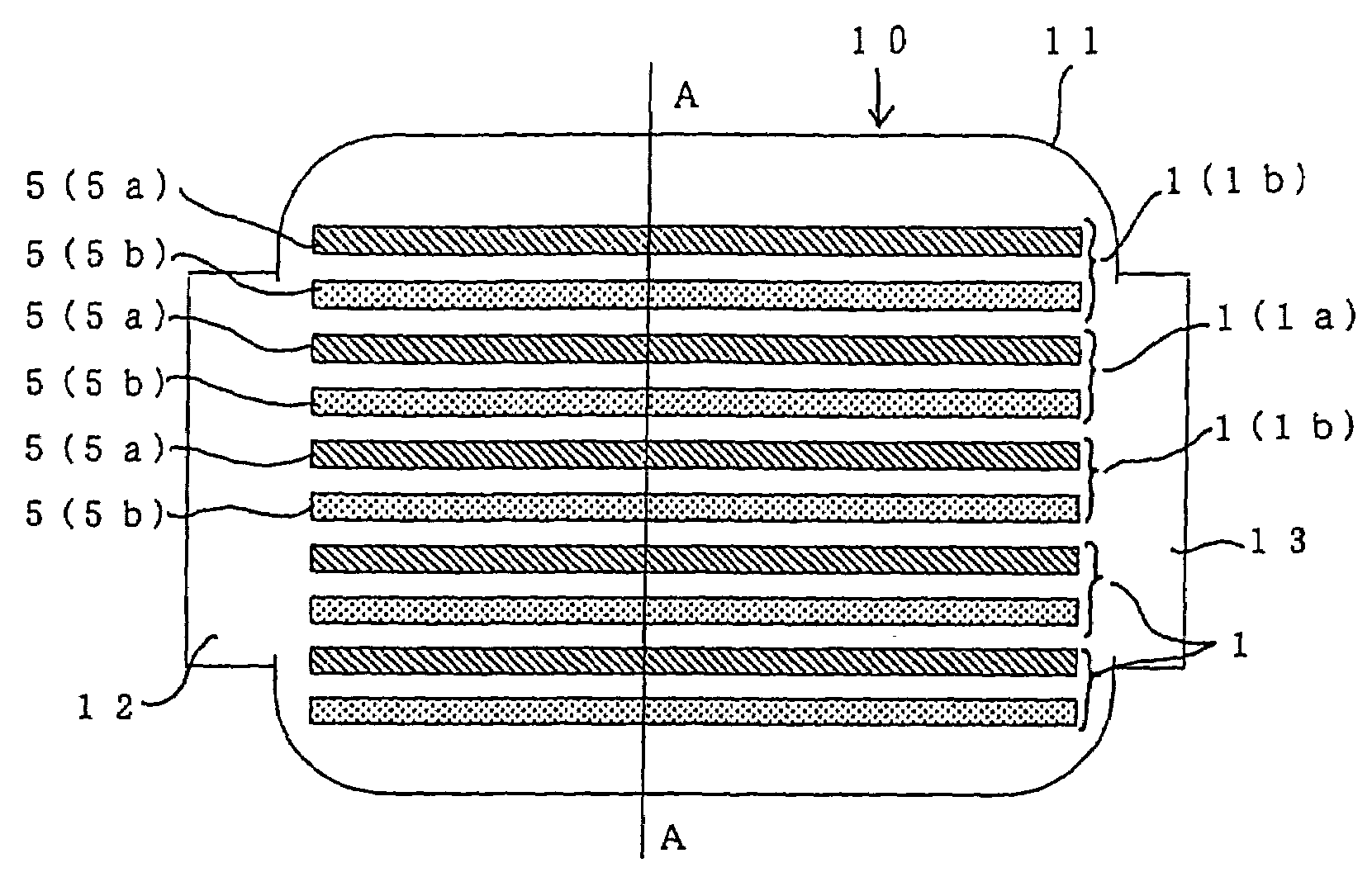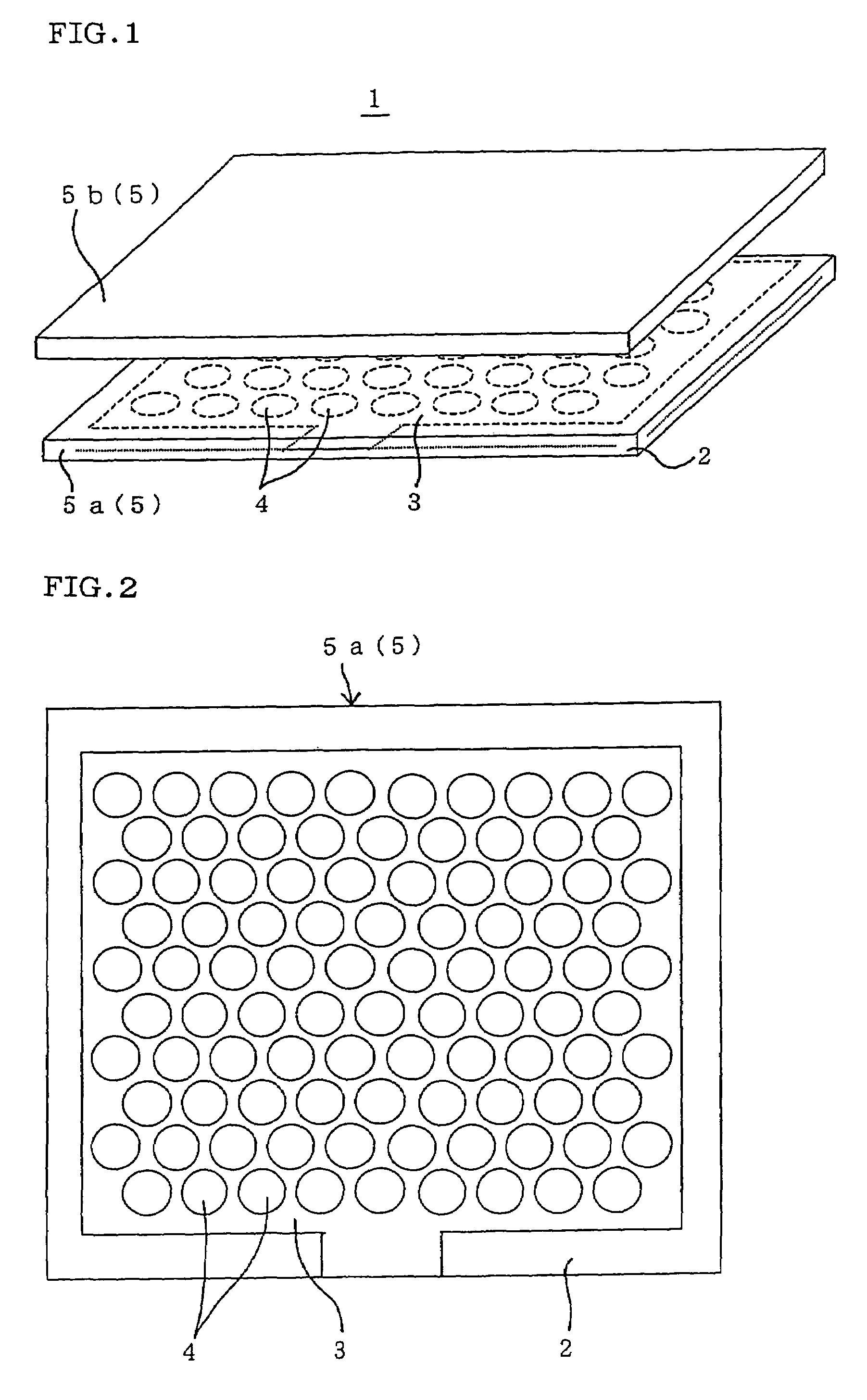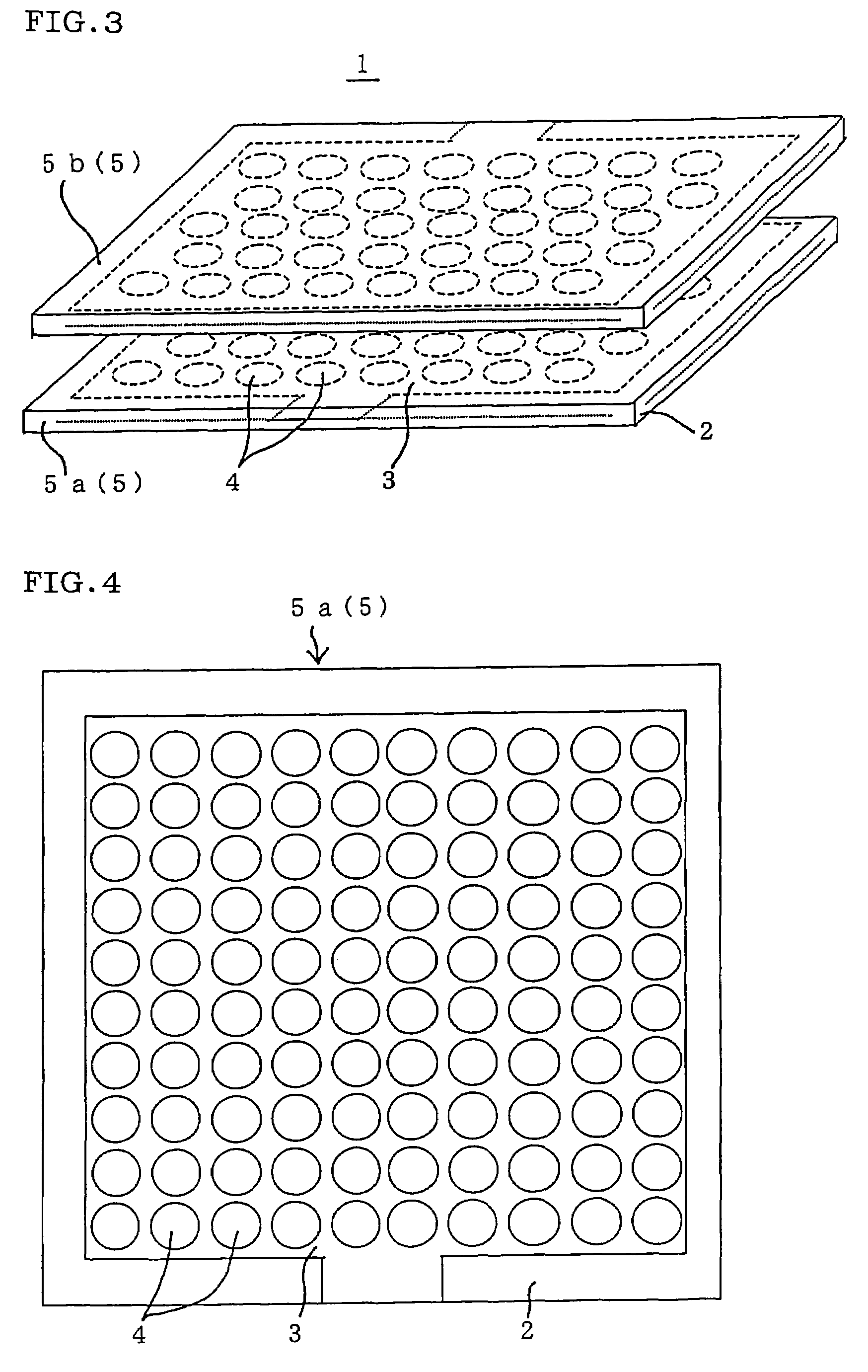Plasma generating electrode, plasma generation device, and exhaust gas purifying device
a plasma generation and purification device technology, applied in gas-filled discharge tubes, energy-based chemical/physical/physico-chemical processes, machines/engines, etc., can solve the problem that uniform plasma cannot be generated over the entire electrode, and achieve uniform and stable plasma, reliably purifying exhaust gas, and low power consumption
- Summary
- Abstract
- Description
- Claims
- Application Information
AI Technical Summary
Benefits of technology
Problems solved by technology
Method used
Image
Examples
example 1
[0076]A plasma generation device including the plasma generating electrode 1 as shown in FIG. 1 was manufactured. The plasma generating electrode was manufactured by disposing two electrodes opposite to each other at a distance of 1 mm, each of the electrodes including a plate-like ceramic body as a dielectric formed of an alumina tape, and a conductive film disposed inside the ceramic plate and having through-holes formed through the conductive film in its thickness direction and having a circular cross-sectional shape along a plane perpendicular to the thickness direction. One of the pair of electrodes of the plasma generating electrode was used as a voltage application side, and the other was used as a grounding side.
[0077]The ceramic plate had a length of 50 mm, a width of 90 mm, and a thickness of 1 mm. The conductive film had a length of 40 mm, a width of 80 mm, and a thickness of 20 μm. The through-holes had a diameter of 3 mm and were equally formed so that the center-to-cen...
example 2
[0086]A plasma generation device was manufactured in the same manner as the plasma generation device of Example 1 except for disposing circular through-holes having a diameter of 5 mm at a center-to-center distance of 6 mm.
[0087]When causing a mixed gas similar to that described above to pass through the plasma generation device of the present example (Example 2), the NO concentration was reduced to 3 ppm at a power consumption of 18 W. This plasma generation device could convert NO at low power consumption in comparison with the plasma generation device of Example 1 so that high energy efficiency was obtained. This indicates that the diameter and the center-to-center distance of the through-holes affect power required to generate plasma.
example 3
[0088]A plasma generation device was manufactured in the same manner as the plasma generation device of Example 1 except for using a stainless steel electrode as one of the pair of electrodes constituting the plasma generating electrode.
[0089]The same mixed gas was caused to pass through the plasma generation device of the present example (Example 3). Electrification was performed at a voltage of 6 kV and a frequency of 500 Hz, and a mixed gas having an NO concentration of 200 ppm was caused to pass through plasma generated. As a result, the NO concentration was reduced to 5 ppm. At this time, the amount of power supplied to the plasma generation device was 40 W, so that power consumption was higher than that of Example 1. However, NO could be converted with high efficiency.
PUM
| Property | Measurement | Unit |
|---|---|---|
| diameter | aaaaa | aaaaa |
| center-to-center distance | aaaaa | aaaaa |
| diameter | aaaaa | aaaaa |
Abstract
Description
Claims
Application Information
 Login to View More
Login to View More - R&D
- Intellectual Property
- Life Sciences
- Materials
- Tech Scout
- Unparalleled Data Quality
- Higher Quality Content
- 60% Fewer Hallucinations
Browse by: Latest US Patents, China's latest patents, Technical Efficacy Thesaurus, Application Domain, Technology Topic, Popular Technical Reports.
© 2025 PatSnap. All rights reserved.Legal|Privacy policy|Modern Slavery Act Transparency Statement|Sitemap|About US| Contact US: help@patsnap.com



